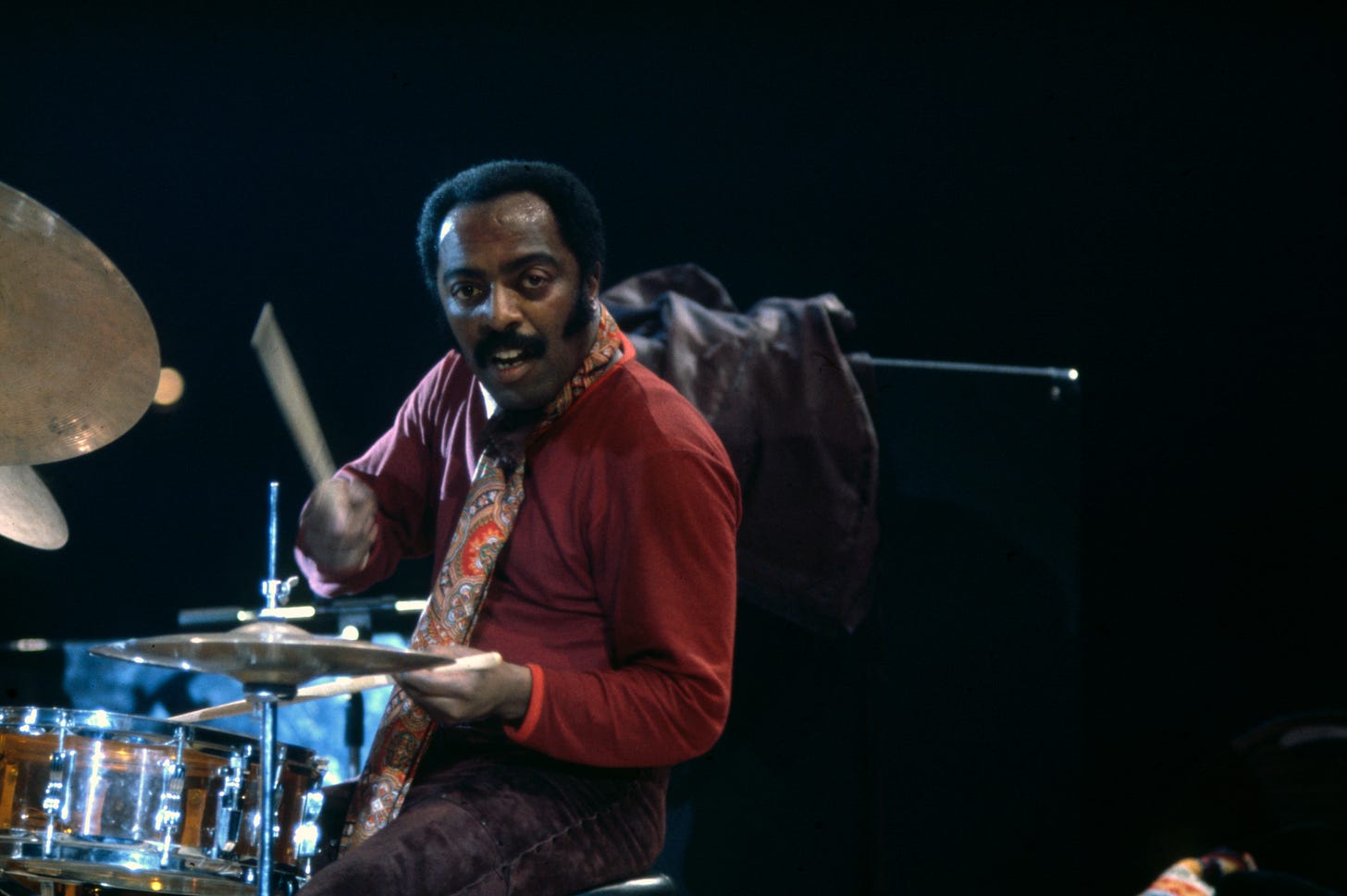For the last quarter of his life — meaning, about a quarter-century — Roy Haynes was famous in part for seeming to defy biological senescence, let alone actuarial science. One running joke, for years, was that he would outlive everybody: not just his exalted peers from the dawn of modern jazz, but everybody else too. “He’s got more energy than 20- and 30-year-old musicians I’ve traveled with,” pianist David Kikoski told Ben Ratliff in 2000, when Haynes was 75. “We can be on a train for hours and hours, get to the bandstand and Roy will always be completely energized and ready to play.”
But time, as Haynes might have put it, will have its own way. As you’ve heard by now, he died on Tuesday morning, at 99. I wrote his NY Times obituary (gift link), and did everything in my power to articulate why he was regarded as one of the greatest and most impactful drummers in jazz history. But within the format of a news obit for the general public, there’s only so much you can do to explore the how of his indescribable beat, which always sounded like nothing else, and never like anything but itself.
Where did you first hear it? When did you first become aware of it? For me, the teenage gateway was Oliver Nelson’s The Blues and the Abstract Truth, followed in short order by Chick Corea’s Now He Sings, Now He Sobs and Bud Powell’s The Amazing Bud Powell — three Hall-of-Fame albums clearly stamped by his contribution, though in strikingly different ways. His style doesn’t sound all that different, though: it’s the alchemical reaction that varies from one setting to the next. Amiri Baraka wasn’t thinking of Roy Haynes when he coined “the changing same,” but the shoe fits.
The first time I witnessed his rhythmic flux firsthand, in 1997, Roy was playing Bud’s music with Chick at Philly’s Theater of the Living Arts. (Also in the band: Wallace Roney, Kenny Garrett and Christian McBride.) By then I’d made a close study of dozens more Roy Haynes performances on record — some recent stuff, some not-so-recent, and even farther back. A new archival album had just dropped on Blue Note, titled One Night Stand: The Town Hall Concert 1947. I had it on heavy rotation, riveted by the authority a young Roy exuded behind both Lester Young and Sarah Vaughan. (Also on heavy rotation, then and now: recordings made at The Five Spot in 1958 by Thelonious Monk, whose spatial geometry worked a certain way with Roy on drums.)
After I moved to New York and began covering jazz for the Times, I had the opportunity to catch Haynes on a regular basis. I reviewed club dates and concerts, including the Sonny Rollins 80th birthday bash at the Beacon Theater (gift link), which famously gave us Rollins onstage with Ornette Coleman for the first time, among other delights. I wrote about Roy’s slyly named Fountain of Youth Band on multiple occasions, and attended his 85th birthday tribute at Jazz at Lincoln Center.
My deepest immersion came around the time of his final studio album, Roy-alty, in 2011. At the time, I was a busy presence in the pages of JazzTimes, and my editor, Evan Haga, asked me to profile Haynes, then a spry 86, for the November issue, with its customary focus on drummers. (Coincidentally, the cover story for that issue was a feature on Terri Lyne Carrington, whom I just wrote about here at The Gig.)
For the piece, I caught up with a garrulous Haynes during a Fountain of Youth engagement at Dizzy’s Club, a sliver of which has been preserved on YouTube.
The profile has been rescued from online oblivion by the new owners of JazzTimes, so if you happen to have an active subscription there, have at it. I’m taking the liberty of providing it below to paid subscribers to The Gig. I think it’s some of my best work.
Among other things, this piece contains some incredibly insightful analysis of Haynes’ musical genius. That’s not tooting my own horn: the insight comes mainly from interviews with Chick Corea, Christian McBride, Jaleel Shaw, Justin Brown, Marcus Strickland, and Roy’s grandson Marcus Gilmore. Also Pat Metheny, who told me in an email that “although he has an identifiable vocabulary, he can conjure a kind of infinity within it.”
Here’s to that endless journey. We all know Roy will travel it in style.
Keep reading with a 7-day free trial
Subscribe to The Gig to keep reading this post and get 7 days of free access to the full post archives.




